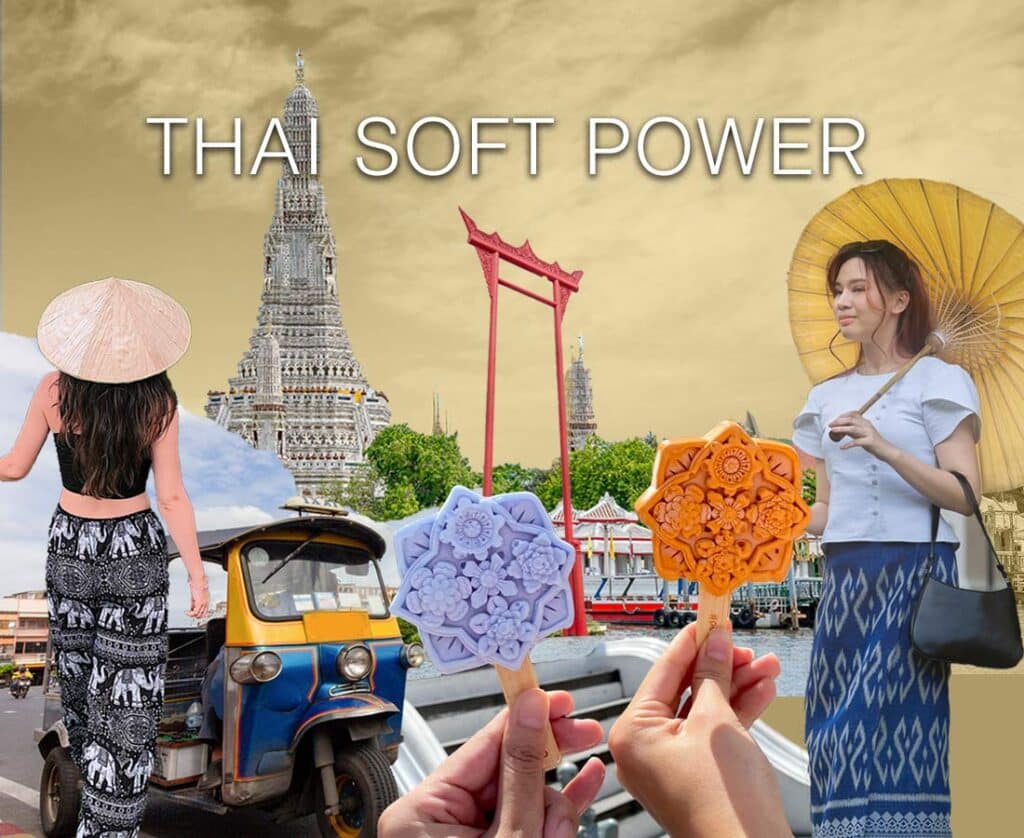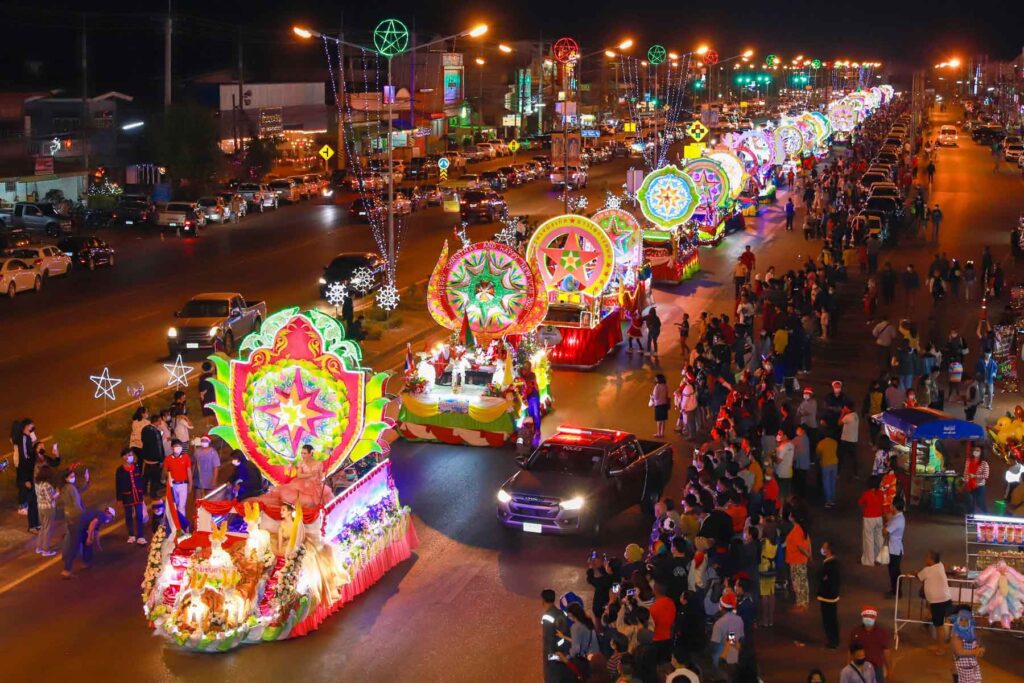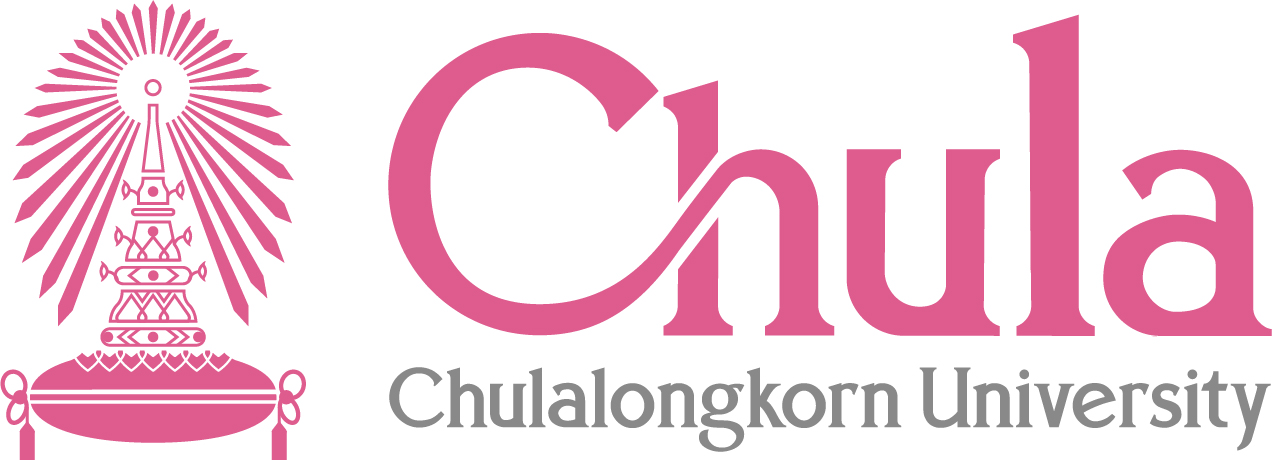Newswise — Thai soft power is trending at the moment.
When “Lisa BlackPink wore a traditional Thai skirt while visiting the temples in Ayutthaya” and sent the demand for Thai textiles to skyrocket and sales to increase dramatically around the world;
The creative ice cream inspired by the design on the tiles of Wat Arun (the Temple of Dawn) that Thai and foreign tourists flock to try;
The “elephant pants fever” – the popular fashion item among tourists to Thailand, that even locals need to buy and wear them to be “trendy”;
Most recently, the Netflix Korean series “King the Land” in which the main protagonists came to Thailand to pay homage at Wat Arun, took a boat ride on the Chao Phraya River, rode in tuk tuks, ate the famous noodles and drank watermelon smoothies, etc. This has sparked a trend for tourists to follow in their footsteps to the must-check-in spots in the series.

This Thai soft power trend helps revive the Thai economy and tourism after the great slump that took place during the COVID-19 pandemic (2020-2022) during which the number of tourists declined by more than a hundredfold. Yet, in 2023, tourism has swung back to 80 percent growth, and more than 30 million foreign tourists are expected to visit Thailand.
We should not allow these emerging Thai soft power trends to fizzle out with time, but all sectors should help to “empower” and sustain Thai soft power. But how?
Assistant Professor Dr. Ake Pattaratanakun, Chula’s Chief Brand Officer, Head of the Marketing Department, at Chulalongkorn Business School, and Board member of the Office of Creative Economy Agency (CEA) (Public Organization), which is responsible for overseeing Thailand’s soft power promotion, discusses the strengths and areas where Thai entrepreneurs and organizations in Thailand should embrace to ignite a strong Thai soft power trend to boost the country’s economy.

Understand Thai Soft Power
We can view Thai Soft Power in many dimensions. For instance, the Tourism Authority of Thailand (TAT) divides Thai Soft Power into 5Fs: Food, Festival, Fighting – Martial Arts, Fashion – Thai Fabric and Fashion Design, and Film.
These 5Fs give us a framework to understand soft power in tangible ways.
However, Thai soft power is also a matter of characteristics and attributes, according to Asst. Prof. Dr. Ake cited the study “Thai Soft Power” by the Kellogg School of Management, Northwestern University. The research was conducted on about 50 corporate executives around the world who have interacted with Thai people and Thai organizations. The results revealed a perspective on Thai soft power in 5 attributes or 5Fs: Fun, Flavoring, Fulfilling, Flexibility, and Friendliness.
“Thai soft power should not be rigid or boxed in an unbending framework, because Thais have a ‘melting pot’ outlook to culture and soft power in which bits and pieces of different cultures are blended into the mainstream because Thais are highly flexible and gregarious in nature. A case in point is the Christmas tree star parade in Tha Rae, Sakon Nakhon province which is the largest Christian community in the country. A procession adorned with stars and decorations has become a yearly event. It is a lovely blend of Thai and Western cultures that is well received and has become one of the tourist attractions of the province.”

Asst. Prof. Dr. Ake also added, “In fact, the culture or soft power of other countries is also fun and colorful, but in Thailand, we are blessed with being flexible, informal and friendly, which remain intact when mixed with other (cultures).”
Empowering Thai Soft Power
While Thai soft power has its strengths, empowering the brand requires a clear focus, especially on the target audience, both in terms of customers and partners.
“The big advantage of Thai soft power is ‘diversity’, but one of the factors hindering our success is the lack of understanding of the target audience. We are indeed diverse, but we can’t put everything in one package and readily hand it off to everyone. Some activities are only suitable for the preferences and interests of certain groups of people. Therefore, when the target audience is unclear, the diversity becomes a clutter blurring the Thai soft power altogether,” Asst. Prof. Dr. Ake points out.
Apart from the target customers, seeking partners and effective sales and distribution channels can also help drive Thai soft power. Asst. Prof. Dr. Ake gives an example of major boxing arenas that can promote Thai culture in world competitions, or a collaboration with a global media such as Netflix to bring outstanding Thai street food stories such as Jay Fai to the world.
2 Ts to Promote Thai Soft Power
Asst. Prof. Dr. Ake pointed out two key factors that will help Thai soft power to skyrocket in the future:
- T. Talent – Asst. Prof. Dr. Ake explained that the talent in developing and producing Thai products and services is already unbeatable, but what needs to be honed is the marketing skills in product and service distribution as well as brand building to create a distinctive image.
Asst. Prof. Dr. Ake also gives an example of a soft marketing approach, “We can do marketing, but not with hard-sell tactics. We can choose more subtle ways that slowly seep into consumers’ minds, which takes time. A good example of this is the Japanese brand “Muji” which has infiltrated into various cultural aspects with soft power without ever advertising. It uses harmony and unity with nature in Japanese culture to blend in with people’s home decor, furniture, and clothing which exudes Japanese identity without having to even claim it. This is a soft power that is not pushy. Thailand can do it as well.” - T. Tool for creating and disseminating soft power is one of the factors that will drive the soft power and the country’s economy. But when we compare our tools/resources to those of other countries like South Korea, ours are still much less.
“Different levels of tools/resources make it very hard to fight. In marketing, there are always three things to keep in mind: money, time, and manpower (people). If you spend less money, it takes more time. If it takes less time, you need more labor. No success is achieved with little money, little time, and little labor.” Asst. Prof. Dr. Ake cautioned.
Chula’s stance as the university to drive Thai soft power
As a leading educational institution in Thailand, Chulalongkorn University plays a role in the development of leaders who will drive and innovate Thai soft power through various programs in various faculties, such as the Faculty of Fine and Applied Arts, Art Education (Faculty of Education), Faculty of Architecture and Faculty of Arts, etc., where relevant research and innovation studies are conducted, and soft power is used to drive society. In addition, Chula also offers specific programs to build the soft power knowledge base, such as the long-standing Graduate School’s master’s degree program in Cultural Management, that’s been consistently revised in order to keep the curriculum current.
“Chula’s various programs have contributed to the development of a new generation of leaders in helping to drive Thai soft power further,” said Assoc. Prof. Dr. Ake, while giving examples of knowledge base, research, and activities related to soft power that the Chula community has created for the public in the areas of language, arts, culture, tourism, economy, and business, as follows:
- Insight Wat Pho Application for tourism at Wat Pho by the Faculty of Architecture
- Creative Luk Thung (Folk Music): Thai Soft Power Going Global Project of the Faculty of Communication Arts, supported by the Thai Media Fund
- Thai Language Courses for Foreigners by The Center for Thai as a Foreign Language
- TV Drama Innovation Project for the Promotion of Cultural Industry 4.0 by the Multicultural Studies and Social Innovation Center, Institute of Asian Studies for the export of Thai Soft Power through entertainment media including Pad Thai (Food Culture), Muay Thai (Martial Arts), Lipao (Thai Fashion) and Phi Ta Khon (Festival) with support from the Social Innovation Hub (SiHub) and Thai PBS News Agency.
- Model research to develop a full range of woven textile culture capital, from creating innovative textile fibers and designing fashion and lifestyle products to upgrading local brands to internationalization, promoting the creative economy and developing creative tourism, supporting sustainable communities.
- The Chula Art Park project of the Faculty of Fine Arts, held at Suan Luang Square. In addition to art installation and sculpture display, music is also played for the enjoyment, relaxation, and comfort of the people in the neighborhood. It’s the application of music therapy, a kind of soft power, to drive happiness in society.
- The Top Corporate Brand Success Valuation research of the Department of Marketing, Chula Business School, which has been conducted for the 13th consecutive year to help drive brand building of organizations in Thailand and ASEAN.
And so on.
Moreover, the Chula Community, including faculty members, and many alumni plays an important role in the committee of the Office of Creative Economy Promotion (CEA) and helps drive the creative economy and soft power policy as well.
“These are what Chula has carried out to drive Thai soft power. We have created the future leaders for soft power and will continue to do so to grow the Thai economy sustainably,” Asst. Prof. Dr. Ake concluded.

